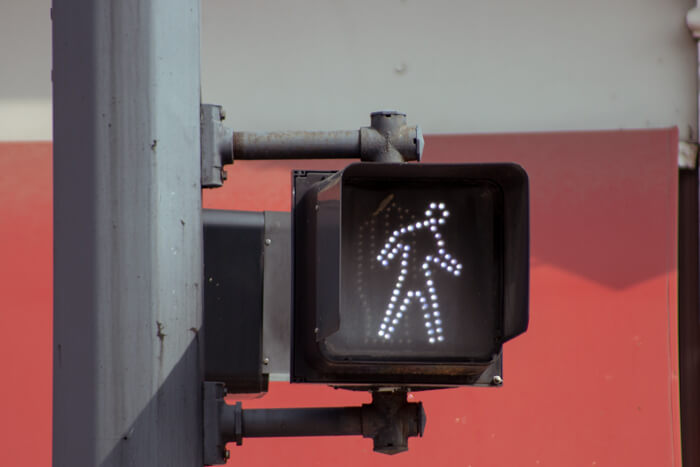Oxford is committed to diversity, equity and inclusion in our organization and the community.

4 Benefits of Working in a Walkable City
Ann Arbor is one of the nation’s most walkable cities. Here’s why that’s great for your business.
Over the years, Ann Arbor has made it into enough top ten lists for it to be almost a cliché. But a few years ago, Ann Arbor made it onto a list of most walkable cities. While that may not seem like a big deal, it’s a perk for many businesses.
Dense urban areas are usually considered more walkable than others, but that’s not the only criteria. For a city to be considered “walkable,” it has to have a fair number of compact neighborhoods with safe, pedestrian-friendly streets and residential neighborhoods that can easily access the downtown by foot.
So, a city might have a developed downtown, but if the streets are too busy, or if the sidewalks aren’t wide enough and clear of obstruction, it could still be considered un-walkable. Similarly, an area with developed suburbs might rely on commuters at the expense of urban residential zones.
What does all this have to do with businesses, you might ask? As it turns out, a city’s walkability is strongly correlated to a number of other quality of life factors. Walkability leads to healthier, happier employees, a more pleasant working environment, and greater work-life balance for employees. Let’s take a look at four benefits your business stands to gain from moving to a walkable city.
1. It’s good for your health.
Many office workers suffer from long hours at their desks in a sedentary job. The added time spent sitting in a car doesn’t help. For many employees, these contribute to poorer health outcomes, such as an increased risk of heart disease, or back and neck pain from sitting still so long.
However, employees who work in a walkable downtown have more opportunities to stretch their legs. The walk into work can help increase their heart rate, and the added activity can improve posture and reduce stiffness in the neck and back. Furthermore, many workers take advantage of their environment to walk to a nearby restaurant for lunch, or to do some shopping after work.
Walking around the block even makes for a pleasant walking break for those who need some fresh air to clear their heads. The fresh air, sunlight, and exercise can help boost moods and productivity in the office.
2. It takes the pressure off parking and reduces traffic congestion.
For many of us, dense urban areas and congested streets seem to go hand-in-hand. But this isn’t the case. A walkable downtown means that most visitors park as soon as they’re close enough to their destination to walk. It also means that, if commuters decide to go to a secondary location after work, they’re likely to walk there rather than drive. And finally, a close-knit downtown area means more efficient public transport, which also helps reduce traffic congestion.
On the other hand, the more spread out a city is, the longer commuters have to stay in their cars before they reach their destination. This ties into the paradox of large parking lots: the more you have, the more you need. Parking lots increase the distance between buildings, making cars more necessary, which leads to the creation of more parking lots.
3. Walkable usually means bikable, too.
There’s a reason why Ann Arbor has a sizable cycling culture. The same streets which lead to easy walking also make it easier to bike—at least in the summer. And biking contributes to a number of the factors we already mentioned: more bikers means fewer cars, less hassle parking, and happier, healthier employees.
Ann Arbor knows this and has several amenities in place for area bikers, including special bike lanes along some of the roads, bike parking lockers within the city, and accommodation for bikes on city busses.
4. It’s a draw for employees and their families.
Close residential neighborhoods cut down on drive time for employees and their families. A truly walkable city makes it possible for some employees to live within walking distance of both work and school. With less time spent driving, employees have more leisure time to spend relaxing at home or with their family and friends.
It’s true that for anyone located outside the downtown area, getting into work may be more of a hassle. But a central location usually balances the commute for employees, so that at least fewer people are stuck driving completely to the other end of town to make it into work.
Proximity to a walkable city is also a bonus.
Of course, not every business wants to locate their offices directly downtown. A central location comes with other burdens, such as higher rent. Not everyone wants to deal with the drive downtown, and for some clients, the lack of on-site parking can be a significant hassle. But most businesses can enjoy the perks of living nearby a town with a walkable city center, even if they’re located slightly outside of it.
This is undoubtedly true of Ann Arbor. A compact downtown means that businesses on the outskirts can access the city center in only a few minutes. Employees can enjoy the walkable city area after work, and the downtown is still within easy distance for working lunches or other business meetings.
So, if you’re looking for a new location for your business, why not factor a city’s foot-friendliness into the equation? We think you and your employees will benefit from the location. Contact us today to learn more about our commercial property search availabilities in Ann Arbor.

